This portable and speedy moisture meter is user-friendly, offering real-time displays of both moisture content and temperature. It features advanced measurement technology, utilizing the resistance method for accurate moisture readings and includes automatic temperature compensation for consistent results. Ideal for precise and efficient moisture analysis in various applications.

Efficient and Versatile Grain Moisture Detector with Automated Features
- Energy-Saving Design: Automatically powers off after a scheduled time or 5 minutes of inactivity, conserving battery life.
- Automated Calculation and Storage: The meter automatically calculates the moisture content and stores the results in memory.
- Wide Application Range: the grain moisture detector can measure 25 different types of grains, including coffee and cocoa beans, making it a versatile tool for various needs.
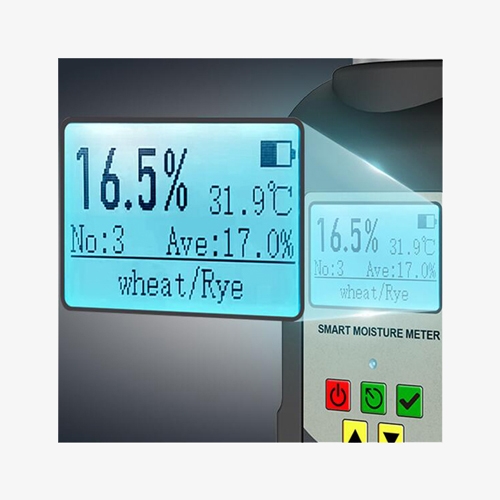
User-Friendly Moisture Meter with Clear Display and Flexible Settings
- Clear and Easy to Read: Equipped with a high-definition dot matrix LCD screen, it ensures clear and convenient readings.
- Flexible Temperature Display: Offers temperature readings in both Celsius and Fahrenheit, catering to different user preferences.
- User-Friendly Interface: Supports multiple languages, easily adjustable via the menu for a personalized experience.
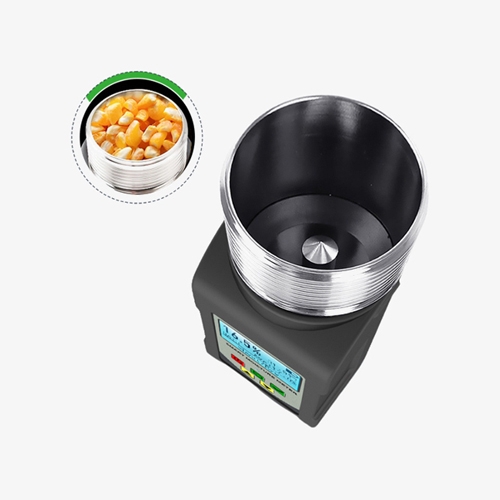
Accurate Hands-Free Moisture Meter, Data Management Enabled
- Hands-Free Operation: Includes a voice broadcast function for added convenience, allowing for hands-free operation.
- Accurate and Reliable Measurements: The cup-type sampling method significantly reduces measurement errors, ensuring precise results.
- Convenient Data Management: With storage and statistical functions, it can store up to 250 data sets for easy tracking and analysis.
Applications
SISCO digital grain moisture measurement device is a versatile and powerful tool designed to measure moisture levels in a wide variety of grains, ensuring accurate and reliable results across different types. This advanced tester is capable of measuring grains such as corn, rice, wheat, and coffee beans, making it an essential tool for those working with these staple crops. Additionally, it extends its functionality to less common grains like sorghum, wild rice, oats, and pearl barley rice, offering comprehensive coverage for a broad spectrum of agricultural needs.
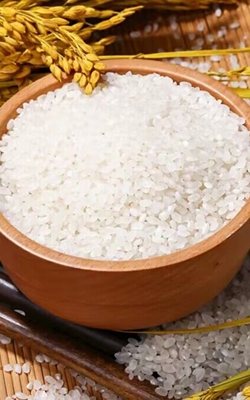
Rice
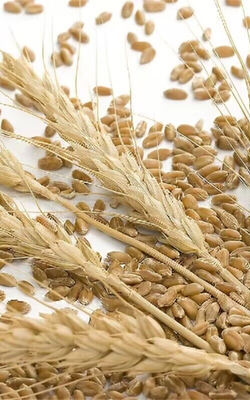
Wheat

Coffee/Cocoa Beans

Corn
| Model | SISCO-MM-IM-4pro |
| Measurement Range | 4.6%~36% |
| Measurement Error | ±0.5% |
| Memory Capacity | 99 measurement values (including date and time) |
| Measurable Types | 25 types |
| Power | 1.5V AAA batteries*4 + 3V CR-2032 battery*1 (NOT INCLUDING) |
| Size | 165*71*74mm |
| Weight | 432g |
Dimension (cm)
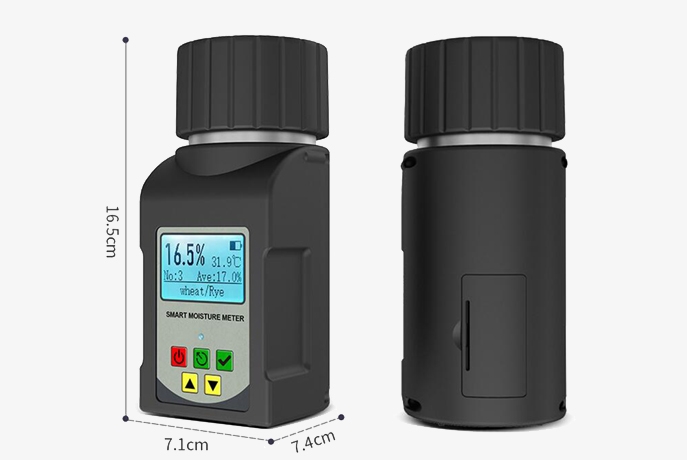
Packing List
- 1 x Moisture meter
- 1 x Packing box
- 1 x User manual
- 1 x Packing bag
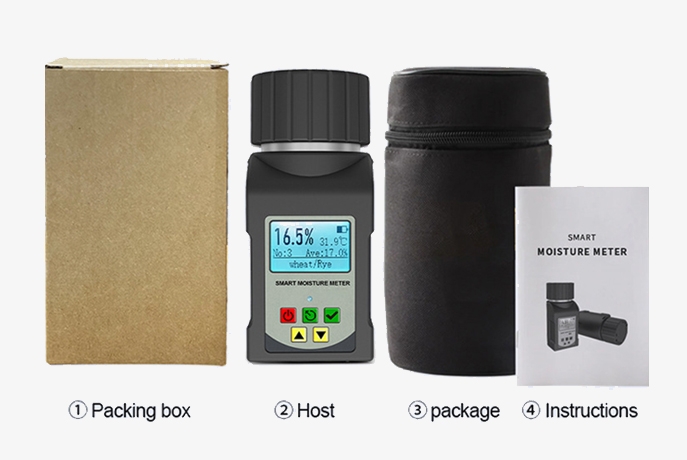
Q1: What is a healthy moisture level for grain?
A1: A healthy moisture level for grain, crucial for long-term storage, generally ranges from 11% to 15% depending on the type. For example, corn should be maintained at 13-15%, wheat at 12-13%, and soybeans at 11-13%. These levels help prevent spoilage, mold growth, and insect infestations, ensuring the grain remains in good condition. Keeping grain within these moisture ranges is essential for preserving its quality and extending its storage life.
Q2: What factors can affect the accuracy of a grain humidity meter?
A2: The accuracy of a grain moisture meter can be influenced by several factors, including temperature, grain type, and calibration settings. Temperature fluctuations can cause variations in moisture readings, so some meters include temperature compensation features. The specific type of grain being measured also affects accuracy, as different grains have unique moisture properties, requiring proper calibration for each type. Additionally, the presence of foreign materials or impurities in the grain sample, such as dirt or chaff, can skew readings. Regular calibration and proper maintenance of the device are essential to ensure reliable results.
Q3: How to maintain and store a smart grain moisture meter?
A3: Proper maintenance and storage of a grain moisture meter are essential to ensure its accuracy and longevity. To maintain the device, it's important to keep it clean and free from dust, debris, and moisture. After each use, wipe down the sensor area with a soft, dry cloth to remove any grain particles or residues that might affect future readings. Avoid using harsh chemicals or abrasive materials, as they can damage the sensors. Regularly check the battery level and replace it as needed to ensure consistent performance. Calibration should also be performed periodically, especially if the device is used frequently or if you're switching between different types of grains.
When storing the grain moisture meter, always keep it in a protective case to prevent physical damage. Store it in a cool, dry place away from direct sunlight, extreme temperatures, or high humidity, as these conditions can impact the device's sensitivity and accuracy. If the meter is not going to be used for an extended period, removing the batteries can help prevent corrosion. Following these maintenance and storage practices will help ensure that your grain moisture meter remains reliable and accurate over time.
Tips: How does a grain moisture meter work?
A grain moisture meter works by measuring the electrical properties of grain, which vary with moisture content. It typically uses either resistance-based or capacitance-based technology. In the resistance method, electrodes inserted into the grain detect moisture by measuring electrical resistance, which decreases as moisture increases. In the capacitance method, the grain is placed in a chamber, and the meter measures changes in the dielectric constant, influenced by moisture levels, using an electromagnetic field. The meter, pre-calibrated for different grain types, quickly converts these readings into a moisture percentage, displayed on a digital screen for easy and accurate assessment.
Thank you for buying industrial test and measurement equipment on SISCO.com, all products sold by SISCO and the partner cover a 12 months warranty, effective from the date of receiving the products.
What is covered?
SISCO is responsible for providing free spare parts, and free technical support to assist the customer to repair the defective products until the problem is solved.
What is not covered?
- Product purchased from anyone other than a SISCO store or a SISCO authorized reseller.
- Expendable parts.
- Routine cleaning or normal cosmetic and mechanical wear.
- Damage from misuse, abuse or neglect.
- Damage from use of parts other than SISCO approved.
- Damage from use outside the product’s usage or storage parameters.
- Damage from use of parts not sold by SISCO.
- Damage from modification or incorporation into other products.
- Damage from repair or replacement of warranted parts by a service provider other than a SISCO authorized service provider.
- Damage caused by the application environment not meeting the product usage requirements and the failure to perform preventive maintenance.

